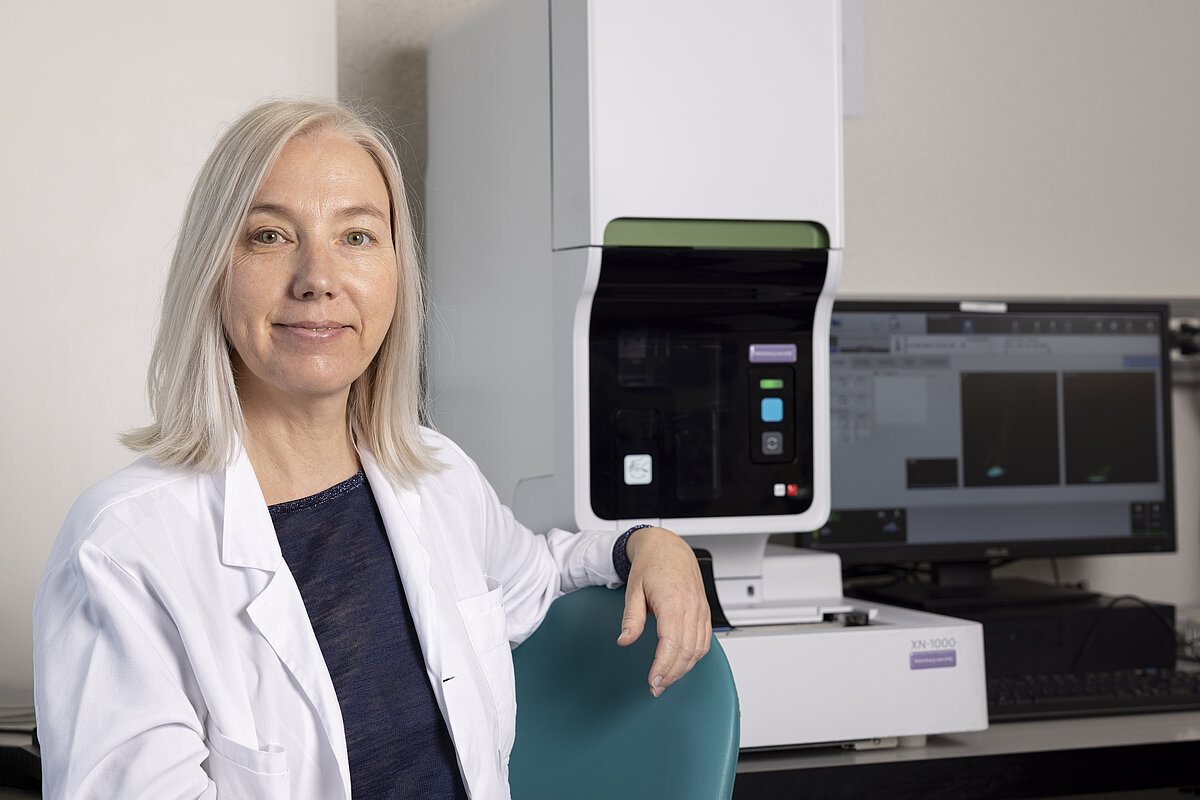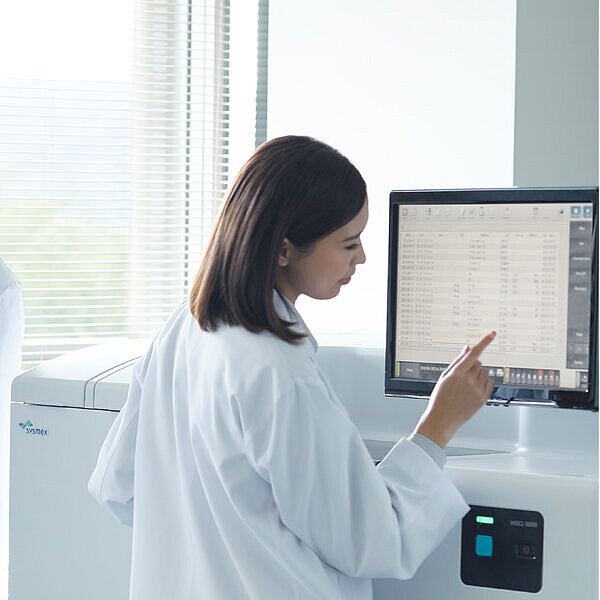Streamlining veterinary diagnostics: How the Sysmex XN-1000V is transforming lab work at the University of Zurich
The Clinical Laboratory of the Vetsuisse Faculty at the University of Zurich is a central service unit of the Veterinary teaching hospital, which analyses patient samples from all clinical departments as well as samples from external veterinarians, zoos and researchers. Around 30,000 samples, predominantly from companion animals, but also samples from livestock and exotics get processed and more than 200,000 analyses carried out each year. Among others, the lab offers haematology and cytology services, including cerebrospinal fluid and bone marrow diagnostics.
Enjoy an interview with the deputy lab head, Dr Barbara Riond, on how the Sysmex XN-1000V supports quality and workflow efficiency in routine practice as well as veterinary research diagnostics.

Sysmex
Dr Riond, you have been working with the Sysmex XN-1000V in your laboratory since 2019. What has changed since then?
Dr Riond
A great deal has changed. This equipment is a gift, and we are grateful for Sysmex’s commitment to veterinary diagnostics. The previous XT-2000iV system already moved us away from manual techniques towards more automation, for example in reticulocyte counting. We have made another quantum leap with the XN-V. Here in Zurich, we are experiencing such an enormous increase in patients and sample numbers that we would no longer be able to cope without the XN-V.
Sysmex
In addition to the automation of the CBC, the XN-V offers new clinical parameters. For the first time, nucleated red blood cell precursors (NRBC) are now not only flagged but also counted directly. How important is this for your work in the laboratory?
Dr Riond
It means huge savings in manpower. We used to count the normoblasts in the blood smear and then calculate the concentration in our laboratory information system. We also had to manually adjust the leukocyte counts downwards. The fact that this step is also automated by the XN-V is really a tremendous help for us. We conducted a study on dogs and cats with very good results compared to the manual method, which we presented at the ESVCP/ECVCP Congress in 2022 in Belgrade for the first time. In combination with the scattergram, the XN-V provides us with very reliable results. If classification within individual samples is not completely successful, we use manual gating. This feature is a real plus point of the XN-V and has practically completely replaced manual NRBC counting on blood smears in our routine practice.
Sysmex
A very efficient use of the XN-V. Body fluid mode is another new feature that enables automated measurement of body fluids with a low cell count in particular. Does this make a difference in your laboratory?
Dr Riond
Yes, absolutely, especially because we examine a lot of body fluids here at the Veterinary Hospital in Zurich, including around 400 cerebrospinal fluid samples per year. Before we used the XN-V in our routine practice, the leukocytes and erythrocytes in the CSF were determined manually using the counting chamber. If you routinely examine four to five CSF samples, then you know the effort involved. Or imagine an employee alone on the late shift, jumping back and forth between haematology and clinical chemistry and then still having to process a CSF sample in a short amount of time. We were able to automate the counting with the body fluid mode. Not 1:1 with the default setting, but by creating our own gate, with which we can very reliably determine leukocyte counts in canine CSF samples. We have just published our study outcome and want to extend it to other animal species in the future.
Sysmex
That sounds very promising! Let’s talk a bit more about the special features of the XN-V. You have already briefly mentioned the manual gating. Many customers use this tool to create new analysis profiles, for example. Do you use this option in the laboratory?
Dr Riond
I have to say, manual gating is a wonderful tool. And it’s so fantastic for veterinary diagnostics because we have so many different animal species with their own particular characteristics. Since this is a veterinary hospital and a lot of samples from sick animals with highly abnormal blood values are examined in our laboratory, gating helps us every day. For example, if we see in the WDF channel that two populations are not optimally classified, then we correct this. As long as there are no band cells, basophils or other atypical cells present, we always prefer the automated differentiation of the XN-V to manual differentiation. We also use it to study species other than the predefined animal species. For example, we work closely with research groups from the university or the Swiss Federal Institute of Technology, who send us samples of various mouse strains or disease models. We can create specific gates for this with the manual analyser tool, which is wonderfully flexible for us as veterinary haematologists!
Sysmex
It sounds like a great deal of positive achievements have found their way into your laboratory with the XN-V! Last question for you, what do your lab staff particularly like about the XN-V?
Dr Riond
That it is extremely user-friendly, straightforward and reliable. The equipment is actually always running. What more can I say? They all really, really like working with the XN-V and, of course, with Sysmex as a company. They know how much easier this equipment has made their day-to-day work in the laboratory. They also value the possibility of re-gating and have become real experts in this process in recent years.
Sysmex
That’s all for today, thank you very much for such a candid discussion!


